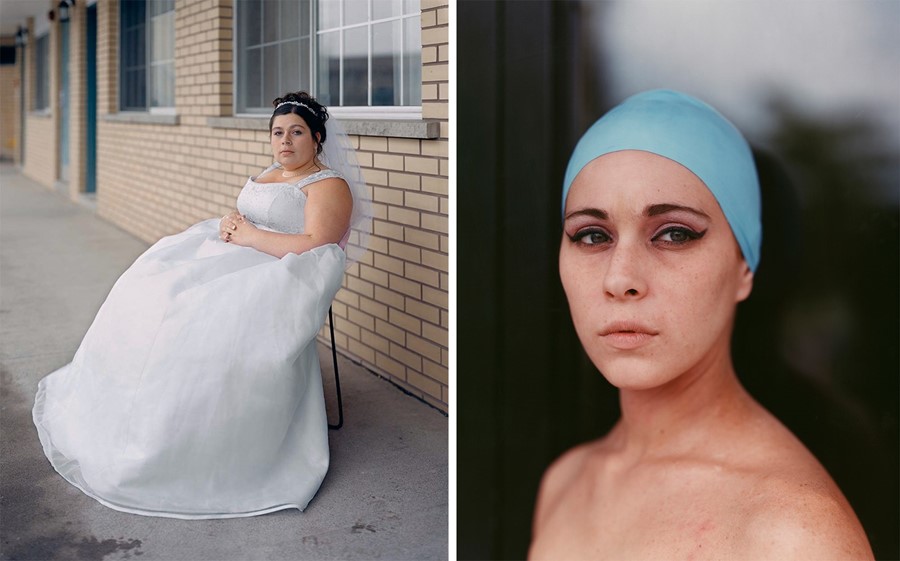As his acclaimed exhibition Gathered Leaves relocates from London to Bradford's National Media Museum, the American documentary photographer reveals the stories behind some of our favourite images from the show
Celebrated American photographer Alec Soth “didn’t take much interest” in his chosen medium until he enrolled in a photo class in college. “I began by making night pictures,” he tells AnOther. “I was already aware of Robert Adams and his book Summer Nights, Walking and I was mimicking that way of photographing, just wandering around in the dark. During that time, I made this picture of a basketball hoop at night. Now it seems very clichéd but at the time it felt special to me, and I still have this romantic feeling about that picture and that time – being out at night, walking around in the quiet and finding things felt exciting.” It was this process of “being out in the world” that saw Soth fall hard and fast for image-making, and which has proved the driving force behind his lauded documentation of his homeland.
Like Robert Frank and Stephen Shore before him, over the course of his career Soth has undertaken a number of road trips across the United States to shoot the people and landscapes that populate it. The resulting photographs are mesmerising in both their ability to capture the raw essence of a subject and their endless narrative potential, whether you’re faced with an elderly male dancer, arms clasped around an imaginary partner, grinning affably at the camera, or two crisp white towels, fashioned into a pair of nuzzling swans, sitting atop a chintz motel bedspread.
“One of the joys of being a photographer is the ability to present my work both in the pages of a book and on the walls of a gallery” – Alec Soth
2015 marked the opening of Soth’s exhibition Gathered Leaves at London’s Science Museum, a much-acclaimed display which chronologically mapped four of Soth’s photographic series – Sleeping by the Mississippi (2004), Niagara (2006), Broken Manual (2010) and Songbook (2014) – all of which were made while journeying across America and were originally published in book form. “One of the joys of being a photographer is the ability to present my work both in the pages of a book and on the walls of a gallery, and Gathered Leaves provides a journey through all my major publications,” Soth explained of the show. “I feel like I’m making up for lost time by finally presenting all four projects at once...”
Here, as the exhibition relocates to Bradford’s National Media Museum, we catch up with the Minnesota-based photographer to discover the anecdotes behind six of our favourite images on display.
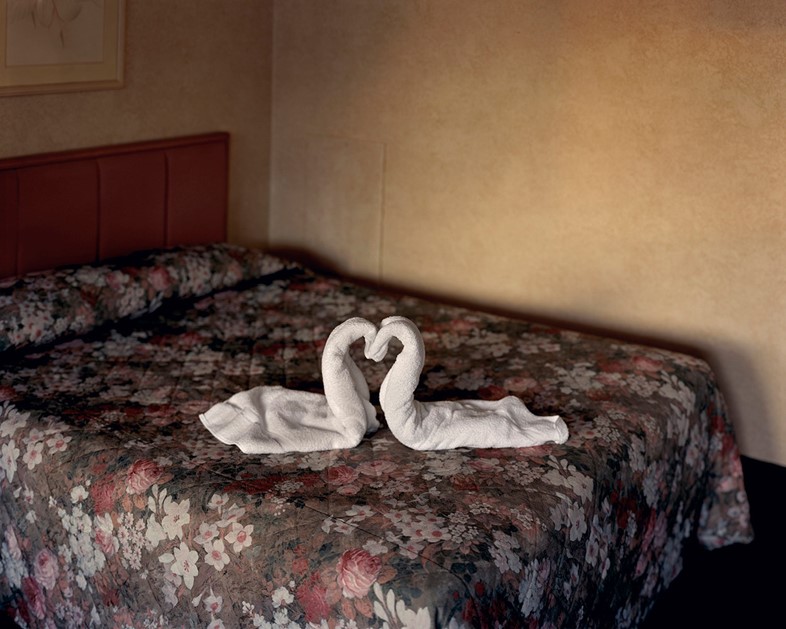
“Two Towels is the cover image for the book Niagara. To tell you something about that project, Niagara Falls is famous in the US for honeymoons and for new love. Marilyn Monroe made a movie there called Niagara and a lot of that movie takes place in a motel, and there’s still a lot of 1950s motel architecture there today. When I walked into this particular motel, there were these swan-shaped towels on the bed – but I always see them as a heart. It was a low-end motel so there’s something sad about trying to fix it up with towel ornamentation. That was the beginning of my attraction to the place. The light was coming perfectly through the door – I was frantic to take the picture before the sun went down. It’s really as simple as that.”
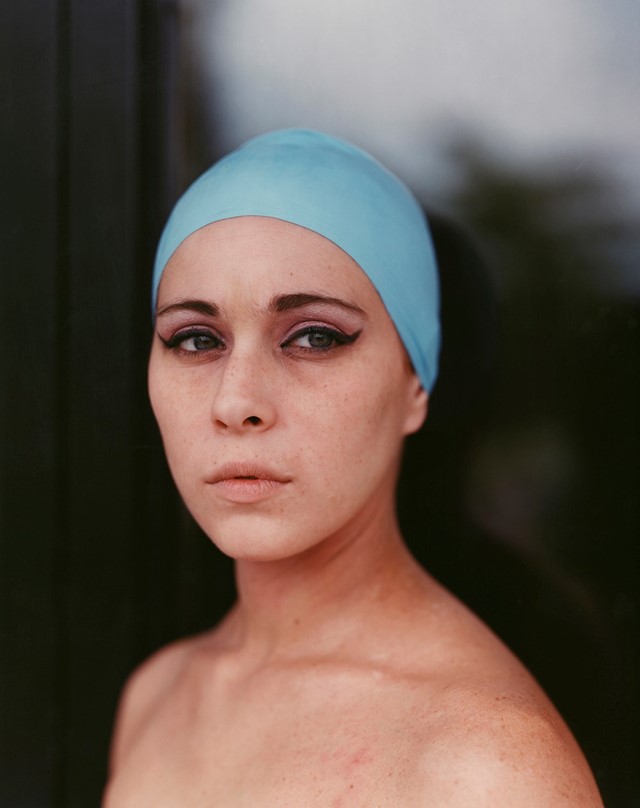
“What I like about Misty is her in relationship to that movie Niagara with Marilyn Monroe. There’s something about that whole place that makes me feel like I’m entering into another era – my grandparent’s time period – and the swimming cap has that feel about it. Sometimes I love telling the story behind the picture and other times I don’t; I like to leave it more mysterious and this is one of those. I want people to imagine a narrative – and it’s been fascinating over the years to hear what they come up with. There’s a high school class who wrote about my pictures and there was a lot speculation about Misty.
A curious thing about this particular picture is that I didn’t include it in the main part of my book for whatever reason, but after I decided to include it in the exhibition, it’s become one of the best-known pictures from the series. A picture can really work on the wall but not in the book. It probably would have worked in the book but I left it out. One of the advantages about having exhibitions is that something that was on the cutting room floor can actually reemerge.”
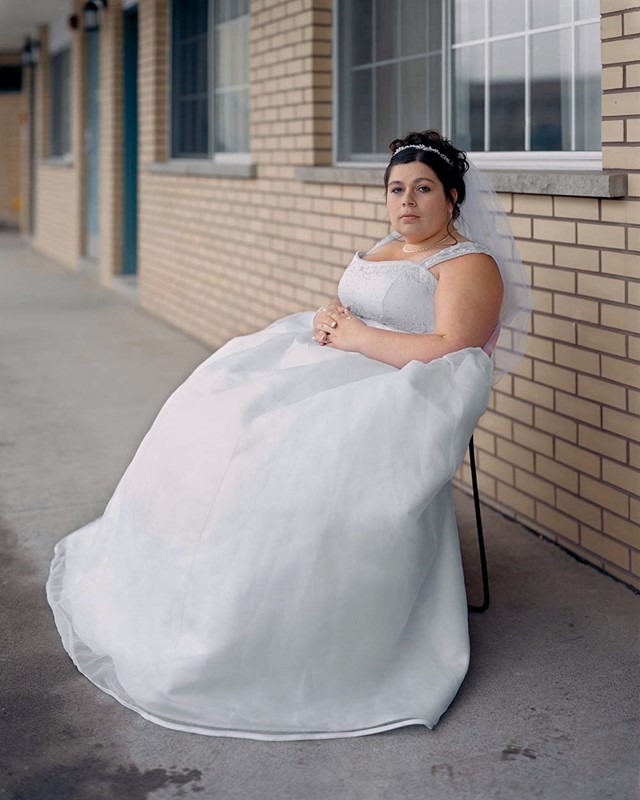
“Melissa is definitely one of my all-time favourite pictures. It marks a turning point with that project because I was photographing this theme of love and struggling with it. A portrait is about the relationship between myself and the viewer, the subject, and when you have a pair of people, it’s challenging because you’re not having that direct relationship with one person. There was a wedding chapel at one of these motels and I was photographing some newlywed couples but the pictures weren’t working. Then I realised I could just take out the groom in this case, and the picture suddenly came to life for me. And somehow it became more about her wedding and her life to come than if the groom had been in the picture. Also, her sitting is interesting – it was raining that day and you can see the dampness coming in the lower left frame. This is all in my head, but I think of it like as the [Niagara] Falls washing up against her.”
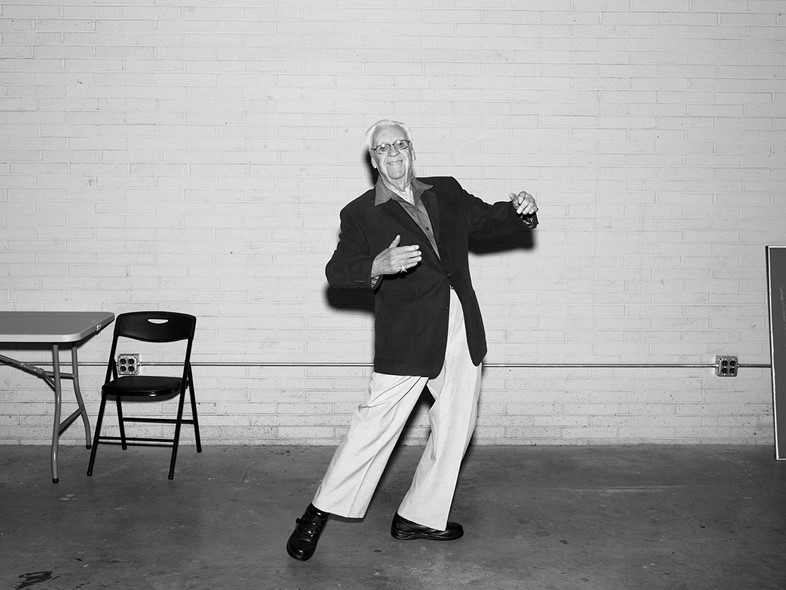
“Songbook was a series I made over a number of years, travelling across the United States, and I was really interested in photographing social life in America. I was working under the guise of a suburban newspaper photographer, and photographing in the style of press photographers earlier in the century – hard flash, black and white, engaging with the world like a press photographer would. Anyway, one important element of American social life is dance, so I went to this dance instructional place and I met this fellow called Bil with one ‘L’, and I learned his story about how he always loved to dance. In fact, he photographed dancers over the years. So it’s a retired gentleman showing me a dance move, but for me the poignancy of the picture – which is kind of related to Melissa in that sense – is that he’s dancing alone. But it’s a joyous picture; I think my work is often described as sad or sombre, and I do agree with that, but there is some joyousness to it as well. This work, like Niagara but in a different way, harks back to a different time; stylistically, the approach reminds one of another time and I’m also thinking about what people’s social lives were like in a time before my own.”

“Crazy Legs Saloon is another example of dance. This is far upstate New York, in a bar where they had one of those foam party nights, which is kind of low-end debauchery [laughs]. The interesting thing about that night, that’s not in this picture, is that this bar is just near a military station, so there were actually a number of people in the bar not dancing in military garb. I couldn’t quite get it to work in the picture but they’re there! And this is the ecstatic moment when the foam party started – I had to make a deal with the guy shooting the foam to not hit me – and these people morphed to look like alien wax figures or something.”
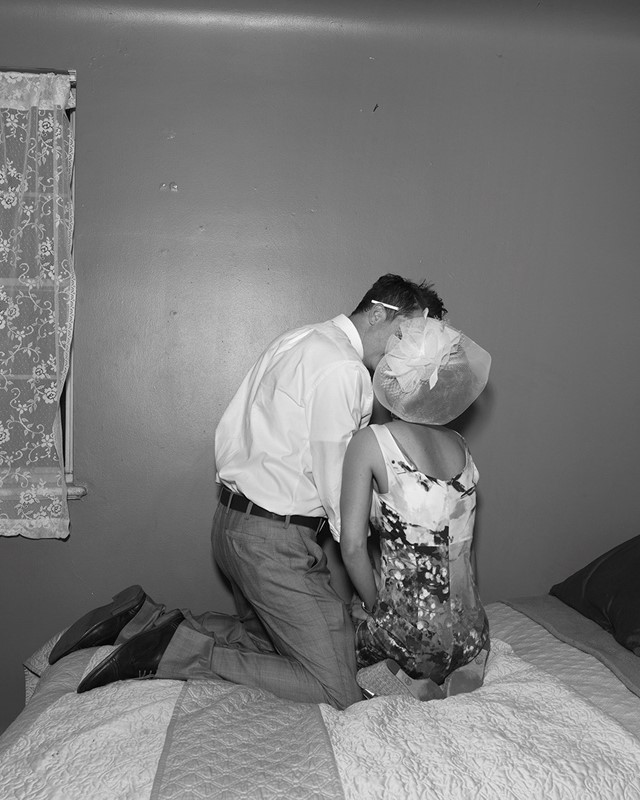
“Dave and Trish were walking down the street, having partied that night, and I talked to them and explained that I was travelling around America, making pictures et cetera. And the fellow Dave really became engaged with the idea because he was a big fan of the Beat, and Jack Kerouac, and he said he had this book about Beat photography that he really wanted to show me – and he actually he ended up insisting I take the book as a gift, which was very nice.
So we went back to their apartment and I photographed them. For me, so much about photography is imagining the narrative and there is a real power to not seeing faces sometimes, or having information that’s not disclosed. One of the things I like about this picture is that it feels like it could have been made in the Beat era – something about the quality of the wall, the way he’s dressed and so on and so forth. A sad follow-up to this picture is that half a year after I made it, I got a call from Trish saying that David had fallen down a flight of stairs and died. I made other pictures that they could use at the funeral or reception. Photography is so wrapped up in time and memory, with all these pictures talking about another time and the past, and it's strange then just realising that this then is a marker of a person who is no longer here, but that was made so recently it’s just hard to imagine.”
Gathered Leaves: Photographs by Alec Soth is at National Media Museum from April 22 – June 26, 2016. Don't miss the free Gathered Leaves gallery talk on Saturday 23 April from 2-3 pm GMT.
